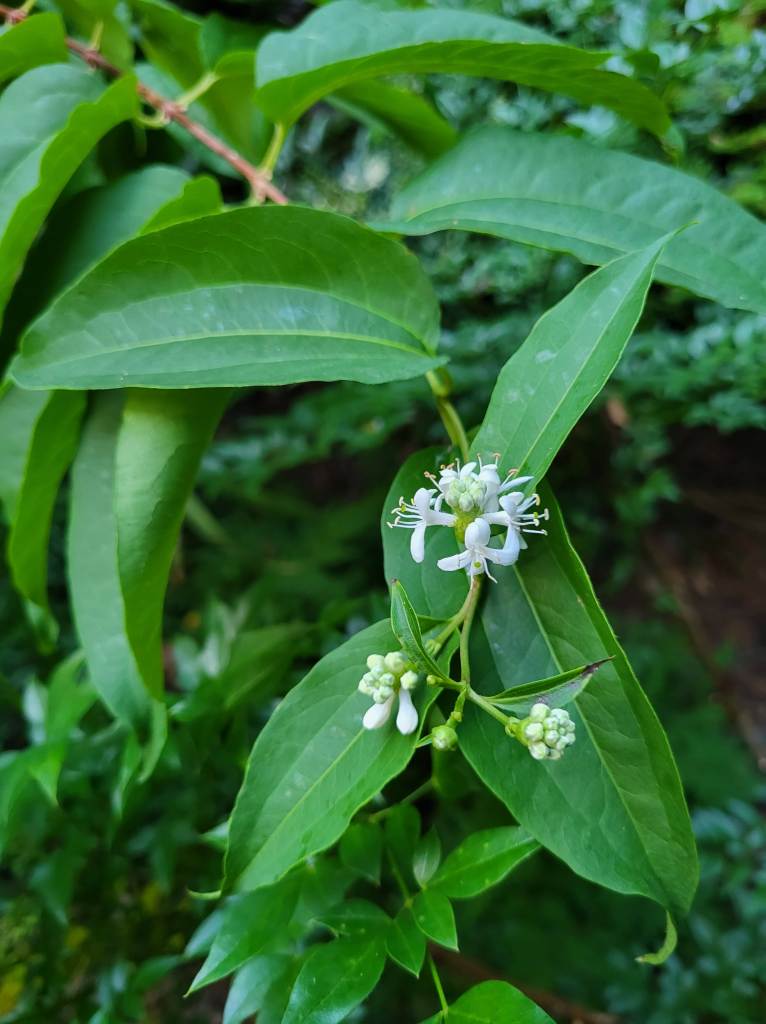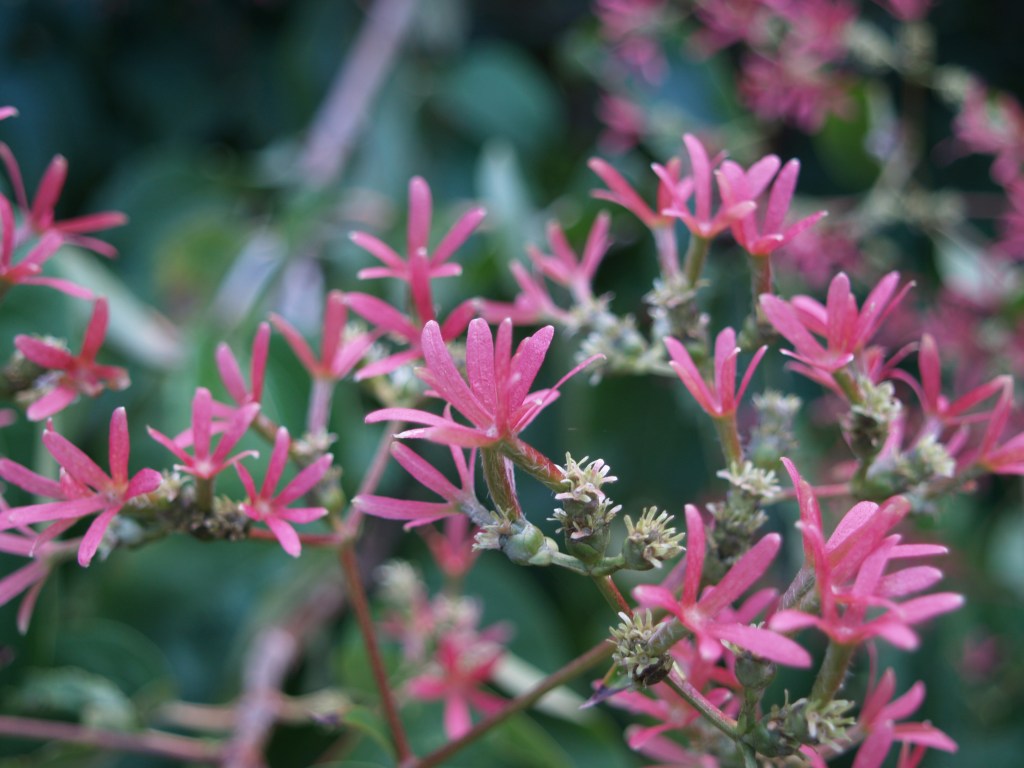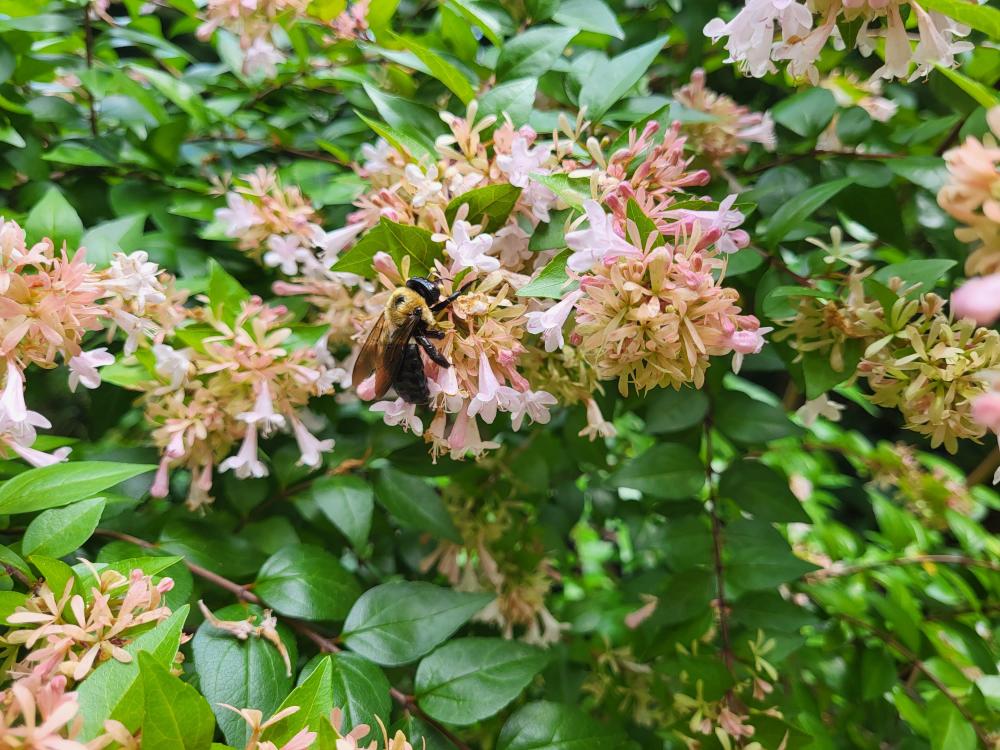A word of warning. The Seven Son Tree (Heptacodium miconioides, below) is ill suited for placement where it might be exposed to straight-line, eighty mile per hour winds. Of course, no tree is well suited to such conditions, and who would have ever thought about such a breeze in the protected rear garden that is bordered by forest?

Several years ago, a storm toppled a beauty growing beside the koi pond patio, severing its multiple trunks at ground level. I expected that such a vigorous tree would sprout again from the roots, but it did not, leaving me with a blank space. The gap was eventually filled by a red horse chestnut (Aesculus x carnea) when another Seven Son of substantial size could not be found. But, still I searched.

Finally, I tracked down a shrubby, four footer. Good enough, but now, where to plant it? Despite severe black spotting of leaves in late summer, the horse chestnut (below, in spring bloom) has become a favorite, so it was not coming out.

No matter, a space can always be found, or in this case, created by moving three or four smaller shrubs around. And, there you have it, an open spot near the path from the circle patio in the upper, rear garden. An ideal location to see the Seven Son in its late summer bloom, the hoards of pollinators that flock to its flowers, and perhaps better yet, the red calyces that follow its flowering.
I’m happy anytime I’m planting, but to find something that I’ve missed is so much better.
Occasionally, I’m surprised to see an old garden photo when plants were considerably smaller, and where new plants were added to fill spaces that are now quite crowded. There’s certainly a lesson here that I might learn eventually.

A ‘Canyon Creek’ abelia (above) was planted into a gap, at the time I think a considerable gap, and for years I didn’t think much of it other than it had pleasant enough pale yellow leaves and long lasting flowers. Then, ‘Canyon Creek’ became threatened as neighbors encroached on its space, and I realized that this is much more than an unremarkable, utilitarian shrub. Fortunately, as the close by paperbush (Edgeworthia chrysantha) has spread, the abelia has increased its vigor and now doesn’t seem to be endangered.
Beyond the foliage, which is okay but not special, the flowers appear in midsummer, but then last until the first hard frost. Bees and butterflies are constantly present, so any plant that is on their list of favorites, must be on mine.

The front garden and upper third of the rear are shaded, some by the forest that borders the southern edge of the garden, but mostly by the many trees that have grown tall in thirty-four years of planting. There are fewer flowers in the shaded garden, but many contrasting foliage colors and textures. One of the best is ‘Sun King’ aralia (Aralia cordata ‘Sun King’, above).
As a die back perennial, and getting a late start growing in the spring, ‘Sun King’ grows back to head high and just as wide by midsummer. Growing under the low canopy of a ‘Seriyu’ Japanese maple (Acer palmatum ‘Seriyu’) with only a brief glimpse of the afternoon sun, the golden foliage of ‘Sun King’ welcomes visitors to the front walk. As it comes into flower, the aralia attracts bees in its few moments in the sun. This bright light in the shade has encouraged me to plant several others, even into deeper shade where they don’t grow quite so large. Still, I wouldn’t be without them.